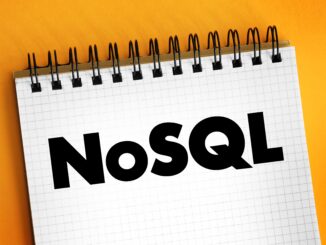Database Performance Tuning in 2025: Why Traditional Buffer Metrics Fall Short in Modern Analytics
The database performance tuning landscape has undergone a seismic shift, yet many experts remain anchored to traditional metrics that no longer tell the complete story. While logical reads and buffer pool analysis served us well in the Oracle and PostgreSQL era, the rise of columnar analytical databases like ClickHouse demands a fundamental rethinking of how we measure and optimize database performance.
Effective Database Performance Tuning requires an understanding of modern metrics and methodologies.
The Golden Age of Buffer Pool Metrics
For decades, database administrators have relied on a simple yet powerful principle: total buffers (logical reads) represent the amount of work a query performs. This approach proved remarkably effective across traditional RDBMS systems because:
Buffer accesses directly correlate with CPU cycles spent processing data. Every logical read represents computational work, making it an excellent proxy for query cost across different hardware configurations.
The physical-to-logical read ratio reveals system health. High physical reads indicate cache misses and I/O bottlenecks, while efficient buffer pool utilization suggests optimal memory management.
Hardware-agnostic performance measurement enables consistent tuning approaches whether running on bare metal, virtualized environments, or cloud infrastructure.
This methodology dominated Database performance tuning for Oracle, SQL Server, and PostgreSQL environments, where 8KB pages and row-based storage made buffer pool analysis the cornerstone of optimization efforts.
Transitioning to modern practices in Database Performance Tuning is essential for optimizing performance.
The Columnar Revolution: When Traditional Metrics Break Down
Modern analytical databases like ClickHouse operate on fundamentally different principles that render traditional buffer metrics insufficient:
Many organizations are investing in Database Performance Tuning strategies to leverage the full potential of their analytical databases.
Compression Transforms the Work Unit
Consider this performance comparison:
-- Traditional RDBMS: 1GB table scan -- Reads: 131,072 8KB pages -- Buffer pool hits/misses tracked per page -- ClickHouse: Same 1GB logical data -- Compressed to 100MB on disk -- Processed as 1,563 64KB blocks -- Actual work: 10x less I/O, 100x more CPU per block
A single ClickHouse "logical read" processes 1000x more data than a traditional page access due to aggressive compression and vectorized operations. Traditional buffer metrics completely miss this efficiency multiplier.
This is why Database Performance Tuning must adapt to new technologies for effective results.
Vectorization Changes Everything
The fundamental processing model has evolved:
-- Traditional row-by-row processing
for each row:
evaluate WHERE conditions
accumulate aggregations
-- Modern vectorized processing
for each 64K column block:
SIMD filter operations on entire vectors
parallel aggregation across multiple cores
cache-optimized memory access patterns
Modern analytical engines perform fundamentally different work that can't be captured by simple buffer access counts.
Understanding the new landscape of Database Performance Tuning is crucial for all data professionals.
PostgreSQL's Blind Spot: The OS Integration Gap
The criticism of PostgreSQL's limited OS-level integration highlights a genuine competitive disadvantage. Without visibility into major/minor page faults, NUMA effects, and memory pressure indicators, PostgreSQL administrators operate with incomplete performance data.
This gap becomes critical when:
- Memory pressure affects query performance but remains invisible to database metrics
- NUMA topology impacts multi-threaded analytical queries
- Storage I/O patterns don't align with database-level statistics
ClickHouse addresses this limitation with comprehensive system metrics:
-- Real-time system visibility SELECT * FROM system.metrics WHERE metric LIKE '%Memory%'; SELECT * FROM system.events WHERE event LIKE '%IO%'; SELECT * FROM system.asynchronous_metrics WHERE metric LIKE '%CPU%';
Modern Performance Metrics That Actually Matter
For analytical workloads in 2025, focus on these key indicators:
These indicators are vital for successful Database Performance Tuning in modern environments.
1. Data Efficiency Ratios
-- Compression effectiveness
SELECT
table,
formatReadableSize(data_compressed_bytes) as compressed,
formatReadableSize(data_uncompressed_bytes) as uncompressed,
round(data_compressed_bytes / data_uncompressed_bytes, 3) as ratio
FROM system.parts;
2. Vectorization Success
Monitor CPU instruction efficiency and SIMD utilization rather than simple buffer counts.
3. Memory Bandwidth Utilization
Track memory throughput and NUMA awareness, not just cache hit ratios.
4. Storage Throughput vs Latency
Focus on sustained bandwidth rather than individual I/O operations.
The Evolution of Database Performance Tuning Methodology
Successful modern database optimization requires a hybrid approach:
- Retain logical reads as a baseline work measurement for compatibility
- Add compression ratios to understand true data efficiency
- Include vectorization metrics for CPU optimization
- Monitor memory bandwidth beyond traditional cache metrics
- Track OS-level resource usage for complete visibility
Real-World Performance Impact
Consider this optimization example:
-- Before: Traditional approach -- Focus: Reduce buffer pool misses -- Result: 10% performance improvement -- After: Modern columnar approach -- Focus: Improve compression + vectorization -- Result: 500% performance improvement
The advancements in technology have changed the scope of Database Performance Tuning.
The performance gains from modern optimization techniques dwarf traditional buffer tuning because they address the actual bottlenecks in analytical workloads.
Database Selection Implications
This paradigm shift affects technology choices:
Organizations must prioritize Database Performance Tuning to stay competitive in their fields.
PostgreSQL remains excellent for transactional workloads but lacks the OS integration and columnar optimizations needed for modern analytics.
ClickHouse provides comprehensive metrics and architectural advantages for analytical use cases.
Traditional RDBMS systems struggle with the scale and performance requirements of modern data analytics.
Conclusion: Evolving Beyond Buffer-Centric Thinking
While traditional database performance expertise remains valuable, 2025 demands an expanded toolkit that addresses modern architectural realities. The core principle—measuring actual work performed—remains sound, but the metrics must evolve.
This new approach to Database Performance Tuning will shape the future of data management.
Buffer pool analysis is like optimizing horse-drawn carriages in the age of rockets.The fundamental unit of work has changed, and database performance tuning methodologies must adapt accordingly.
Database professionals should:
- Understand both traditional and modern metrics
- Choose appropriate tools for specific workloads
- Embrace columnar architectures for analytical use cases
- Demand better OS integration from database vendors
The future belongs to those who can bridge traditional database wisdom with modern analytical architectures, creating performance optimization strategies that leverage the best of both worlds.
FAQ’s
Q1: Why are traditional buffer pool metrics insufficient for modern analytical databases like ClickHouse?
Traditional metrics, such as logical reads and buffer pool hit ratios, were effective for row-based databases. However, columnar databases like ClickHouse utilize compression and vectorized execution, making these metrics less indicative of actual performance.
Q2: How does data compression in ClickHouse affect performance tuning?
ClickHouse's aggressive data compression reduces I/O operations but increases CPU usage per block. This shift necessitates a focus on CPU efficiency and query optimization over traditional I/O metrics.
Effective Database Performance Tuning can result in significant cost savings and efficiency improvements.
Q3: What are the key considerations for tuning performance in columnar databases?
Key considerations include understanding compression ratios, optimizing query execution plans, and monitoring CPU utilization, as these factors significantly impact performance in columnar architectures.
Q4: How can I monitor performance effectively in ClickHouse?
Utilize ClickHouse's system tables and logs to monitor query execution times, CPU usage, and disk I/O. Tools like Grafana can also be integrated for real-time performance visualization.
🔗 Related Articles for Further Reading
1. Redis Optimization: Performance Tuning for High Traffic Applications
Explore strategies for optimizing Redis configurations to handle high-traffic scenarios efficiently.
As we explore techniques, remember that Database Performance Tuning is a continuous journey.
2. Expert Guide to MySQL Performance Troubleshooting
Delve into best practices for identifying and resolving performance bottlenecks in MySQL databases.
3. Mastering PostgreSQL Performance: Strategies for Tackling Long-Running Queries
Learn techniques to optimize PostgreSQL performance, particularly focusing on long-running queries.
4. Unveiling InnoDB Optimization Techniques: Reducing Block Access
Discover methods to enhance InnoDB performance by minimizing block access and improving I/O efficiency.
5. MongoDB Performance: Optimizing Data Ingestion with Indexing
Understand how to optimize MongoDB data ingestion processes through effective indexing strategies.
Reference readings:
Invest in Database Performance Tuning to fully harness your data's potential.
Looking to optimize your analytical database performance? Consider evaluating ClickHouse for workloads where traditional RDBMS systems fall short. The performance gains from modern columnar architectures often justify the migration effort for data-intensive applications.
To maximize your outcomes, focus on Database Performance Tuning as a primary strategy.
Top 10 Reasons to choose ChistaDATA’s ClickHouse for Real-time Analytics
5 Reasons to use ChistaDATA’s ClickHouse for Real-time Analytics
In conclusion, Database Performance Tuning is not just vital; it's essential for growth.
Comparing Columnar vs Row-based Databases for Real-time Analytics
Effective Database Performance Tuning remains the cornerstone of successful data strategies.


